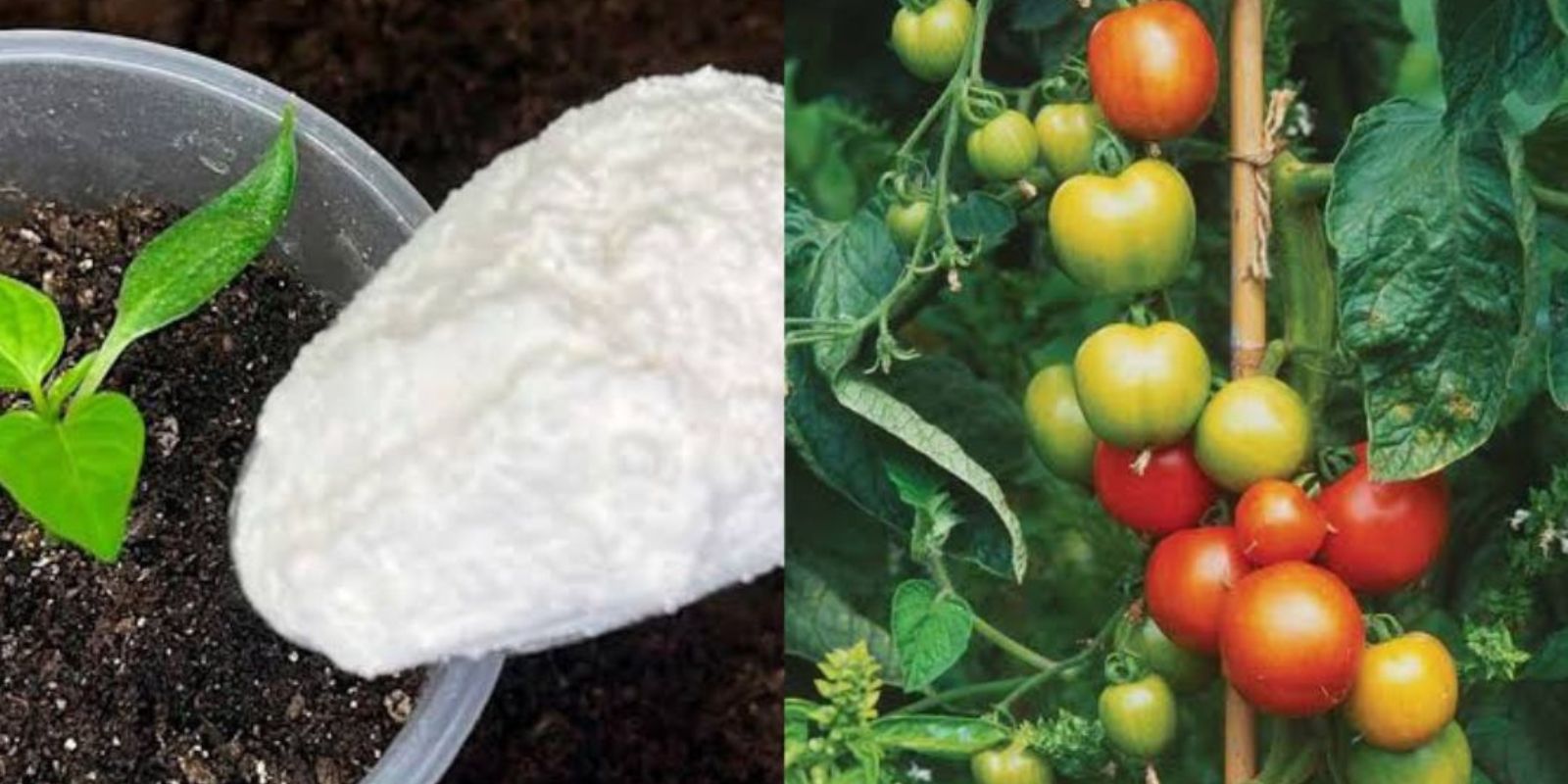Tomatoes, peppers, and cucumbers are staples of every thriving garden. They’re not just delicious and versatile in the kitchen; they’re also incredibly rewarding to grow. But if you’ve been struggling to achieve the rich and plentiful harvest you dream of, there might be one simple step missing from your gardening routine. The secret? A natural, nutrient-rich boost that transforms your soil and nurtures your plants from the roots up.
In this article, we’ll guide you through the process of preparing and applying this natural fertilizer that ensures stronger plants, healthier growth, and abundant yields. Get ready to elevate your gardening game!
The Key to Success: Natural Fertilizers for Thriving Plants
One of the biggest mistakes many gardeners make is planting tomatoes, peppers, and cucumbers without properly preparing the soil. These plants are heavy feeders, which means they require a steady supply of nutrients to grow healthy roots, lush foliage, and vibrant fruits.
By using a simple homemade fertilizer made from kitchen scraps and natural materials, you’ll not only provide your plants with essential nutrients but also reduce waste and embrace sustainable gardening practices.
Step-by-Step Guide to the Secret Fertilizer
1. Gather Your Ingredients
The secret to healthier plants lies in a nutrient-packed mix that’s easy to create at home. You’ll need:
- Eggshells: High in calcium, they prevent blossom end rot in tomatoes and peppers while strengthening cell walls.
- Banana Peels: Packed with potassium and phosphorus, these support flowering and root development.
- Coffee Grounds: Rich in nitrogen, they promote leafy growth and improve soil structure.
2. Prepare the Fertilizer
- Crush the eggshells into small pieces to ensure faster breakdown in the soil.
- Chop banana peels into small chunks.
- Dry used coffee grounds to avoid mold during storage.
For a more potent boost, blend all three ingredients together in a food processor until you achieve a fine, consistent texture.
3. Apply the Fertilizer Before Planting
When planting your tomatoes, peppers, or cucumbers:
- Dig a hole slightly larger than the root ball of your seedling.
- Add 1–2 tablespoons of the fertilizer mix to the hole.
- Cover with a thin layer of soil before placing your plant to avoid direct contact with roots, which can cause burning.
4. Maintain Nutrient Levels Throughout the Growing Season
To keep your plants thriving, replenish their nutrient supply every few weeks:
- Sprinkle a handful of the fertilizer mix around the base of each plant, avoiding direct contact with the stem.
- Water thoroughly to help nutrients seep into the soil.
Additional Tips for Thriving Tomatoes, Peppers, and Cucumbers
1. Use Compost Tea
Take your fertilizer to the next level by brewing a compost tea:
- Add your fertilizer mix to a bucket of water (about 1 cup of mix per gallon of water).
- Let it steep for 24–48 hours, stirring occasionally.
- Strain the liquid and use it to water your plants for an instant nutrient boost.
2. Mulch for Moisture and Protection
Tomatoes, peppers, and cucumbers thrive in consistent moisture levels. Use organic mulch (like straw or dried grass clippings) around your plants to:
- Retain soil moisture.
- Regulate soil temperature.
- Reduce weed growth.
3. Water Wisely
Overwatering or inconsistent watering can lead to problems like root rot or blossom end rot. Follow these guidelines:
- Water deeply once or twice a week, ensuring the soil stays consistently moist but not waterlogged.
- Use drip irrigation or a soaker hose for even watering.
4. Companion Planting for Better Yields
Planting the right companions near your tomatoes, peppers, and cucumbers can boost their growth:
- Basil and marigolds repel pests.
- Carrots and radishes loosen the soil, improving root development.
The Benefits of Natural Fertilizer
Using this homemade fertilizer offers multiple advantages:
- Eco-Friendly: You’re recycling kitchen waste and reducing your carbon footprint.
- Cost-Effective: No need for expensive commercial fertilizers.
- Nutrient-Rich: Provides a balanced supply of nutrients tailored to your plants’ needs.
- Sustainable Gardening: Improves soil health and encourages beneficial microbes.
Common Mistakes to Avoid
1. Over-Fertilizing
Too much fertilizer can burn your plants or cause excessive foliage growth at the expense of fruit production. Stick to the recommended amounts.
2. Planting in Poor Soil
If your soil lacks organic matter, even the best fertilizer won’t save your plants. Improve soil quality by adding compost or aged manure before planting.
3. Ignoring Pest and Disease Prevention
Healthy plants are less susceptible to pests and diseases. Keep an eye out for common issues like aphids, whiteflies, and fungal infections, and address them promptly.
Why Every Gardener Should Try This
The combination of eggshells, banana peels, and coffee grounds isn’t just a random mix – it’s a carefully balanced blend of essential nutrients that promotes healthy roots, lush foliage, and abundant fruiting. With minimal effort and zero cost, you can transform your garden into a thriving paradise of tomatoes, peppers, and cucumbers.
Conclusion
With just a few kitchen scraps and some simple steps, you can unlock the secret to growing healthy, productive tomato, pepper, and cucumber plants. By enriching your soil with this natural fertilizer and following best gardening practices, you’ll enjoy a harvest like never before – all while embracing sustainable and eco-friendly gardening techniques.
💬 Have you tried this method in your garden? Share your results and tips in the comments below!
🌱 #GardeningTips #OrganicFertilizer #GrowYourOwnFood #HealthyHarvest #EcoFriendlyGardening

